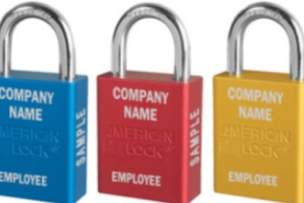Cut-resistant gloves protect hands from injury, but to get the most from the gloves you buy, you need to know the level of protection you need, as well as other features that will help your workers get their jobs done safely and efficiently.
What You Need to Know
Our hands are among our most important tools, at work or at home. Yet they’re also among the most at-risk body parts. The right gloves can help, but do you understand all the factors—such as the right standards for your industry or the importance of fit and comfort to workers?
More than a million workplace hand injuries occur each year, including lacerations and punctures. In a June 20 webinar offered by MSC, Kathleen Rouse, director of research and development at Worldwide Protective Products, and John Mazur, Worldwide’s regional sales manager, discussed cut-resistant glove features and standards.
According to the U.S. Bureau of Labor Statistics, of the more than 1 million workers that head to the emergency room each year with hand injuries, more than 70 percent weren’t wearing gloves, and 30 percent were wearing damaged, inadequate or the wrong type of glove.
Besides the cost of medical claims and workers’ compensation claims, hand injuries can also lead to a significant amount of lost work time, Mazur says.
Rouse says the changes in rating levels were driven by product innovation, with new yarn technologies changing the levels of cut protection offered by gloves. The new scores allow manufacturers and users to zero in on gloves that offer higher performance.
“Today, engineered yarns are the gold standard because of their ability to deliver higher cut-resistant levels,” says Rouse. “By engineered yarns we mean a combination of materials put together to provide more protection than any single material alone.”
Rouse says four material characteristics affect a glove’s cut resistance:
- Strength: A glove can be made stronger through the use of materials like Kevlar.
- Hardness: Materials like stainless steel add to a glove’s hardness.
- Lubricity: Some materials can increase a glove’s slipperiness, making a cutting edge slide over the surface of the glove instead of cutting it.
- Rolling action: “A sharp edge slides over the top of the yarn as if rolling across a ball bearing without cutting through the material,” Rouse says. “This also explains why knitted gloves usually do well in CR applications–the yarn loops have room to move and roll when contacted by a sharp surface.”
Gloves can be designed for one or more of the factors, depending on the anticipated use and level of cut protection needed, but no single fiber can offer every benefit.
“Glove manufacturers engineer composite yarns, made with two, three and even more individual components to deliver the benefits of strength, hardness, lubricity and rolling action,” Rouse says. “In that way, we can deliver gloves with two or even three times more cut resistance than a product made only with one component.”
Safety Gloves for Flame Resistance, Temperature, Wearability and Visibility
Besides cut resistance, gloves created with a mix of fabrics can also meet a variety of other needs, Mazur says.
“By strategically blending high-functioning fibers (like steel and fiberglass) and other traditional fibers (like cotton, polyester and spandex) we can deliver additional benefits for the glove, like abrasion, cold and heat resistance, and even flame resistance,” Mazur says. “In the same design, we can improve things like fit and dexterity and things like coolness and moisture-wicking to the skin.”
Depending on the planned use, gloves may be designed with protective features such as resistance to cold, heat, flame or chemicals, impact protection, or extra protection for fingers, thumb crotch, wrists or forearms.
“High visibility is becoming more and more popular in the industry right now,” Mazur says. He says a plant where workers had to change rollers on a machine had a problem with fingers getting pinched. “The reason was one worker couldn’t see the other workers’ hands. So they asked us to develop a high-visibility glove. Now both workers can see the others’ hands when placing the rollers.”
Wearability factors–things that make a glove more comfortable–include flexibility and stretch, manual dexterity, fingertip sensitivity, breathability and more.
“If it’s not comfortable, compliance is going to be very low,” Mazur says.
If your supplier can’t find a glove that fits your needs, you don’t need to settle for something that doesn’t work well for your task. Mazur says manufacturers can now design gloves to meet specific needs.
“Glove manufacturers engineer composite yarns, made with two, three and even more individual components to deliver the benefits of strength, hardness, lubricity and rolling action. In that way, we can deliver gloves with two or even three times more cut resistance than a product made only with one component.”
ASTM vs ANSI: Understanding Cut Resistant Glove Standards
According to Rouse, two organizations set the standards for cut-resistant gloves: ASTM International sets the standard for cut testing, while the American National Standards Institute sets the standard for reporting cut levels.
“I often think of ASTM as telling us how to do the cut testing and ANSI telling us what to do with the results,” says Rouse.
ANSI updated its ratings in 2016, so there are now two sets of scores. ANSI scores of 1 through 5, with 5 being the most cut-resistant, mean the product was tested by the standard in effect before 2016, says Rouse. ANSI scores of A1 through A9 mean the product was tested based on the new scoring levels.
“The biggest difference in the two scoring methods is that the new one is more detail,” she says. Products formerly covered by ANSI level 4 are now rated by levels A4 through A6, and products formerly covered by level 5 are now rated A7 through A9.
What are your cut-resistant glove needs? Tell us what types of tasks your facility uses cut-resistant gloves.





Talk to Us!
Any gloves for handling oily parts that wouldn’t slips from my hands?
17Hi Joe. Have you tried our Gloves Product Selector to help identify the right kind of gloves for almost any application? Check it out and let us know what you think!
https://www.mscdirect.com/betterMRO/safety/gloves
Thanks for visiting Better MRO!
28I just started wood carving I would like to know the best glove I should use thank you
20David, this really depends on what you are working with. There are a couple of things to consider, sharpness of the knife and the pressure/force being used. Cut resistant gloves in the U.S. should be designated with cut rating from A1 thru A9. This rating is based on gram weights of force so depending on the softness of the wood you are carving and the amount of force applied will determine the glove needed.
There are also different coatings on most cut resistant glove to consider. I assume you will be working with dry material so you can use a Polyurethane (PU) or Nitrile coated glove for best grip.
If you are using a lathe we reccomend that you not wear gloves as this increases the chances of being pulled into the machinery if the gloves were to be caught.
You can use our product selector, https://www.mscdirect.com/betterMRO/safety/gloves, to find the best product to suit you needs.
I hope this helps and Thank You for visiting Better MRO.
28Need a Cut Resistant 4 gloves that wicks away moisture for our employees who must continuously wear glove while in the field (all day). This glove must provide grip and dexterity.
16Hello I am in the field as a boiler maker/welder some of the places I go you must wear the cut resistance impact safety gloves but them things break me out real bad to we’re I have to go get a shot can you tell me a specific glove I could wear
3I would like free samples in different sizes of ANSI A7 A9/ANSI A5 , cut resistant gloves. I'm safety coordinator at LADWP, looking to buy volume.
20This article helped me a lot to find the right and safe hand protection gloves that I was looking for the past few days. Thanks for sharing this informative article with us. Please keep sharing such kind of article with us.
20We are metal framing and hanging drywall. I need to know what specific cut value glove type should we be using.
19Leave a reply
Your email address will not be published. Required fields are marked *